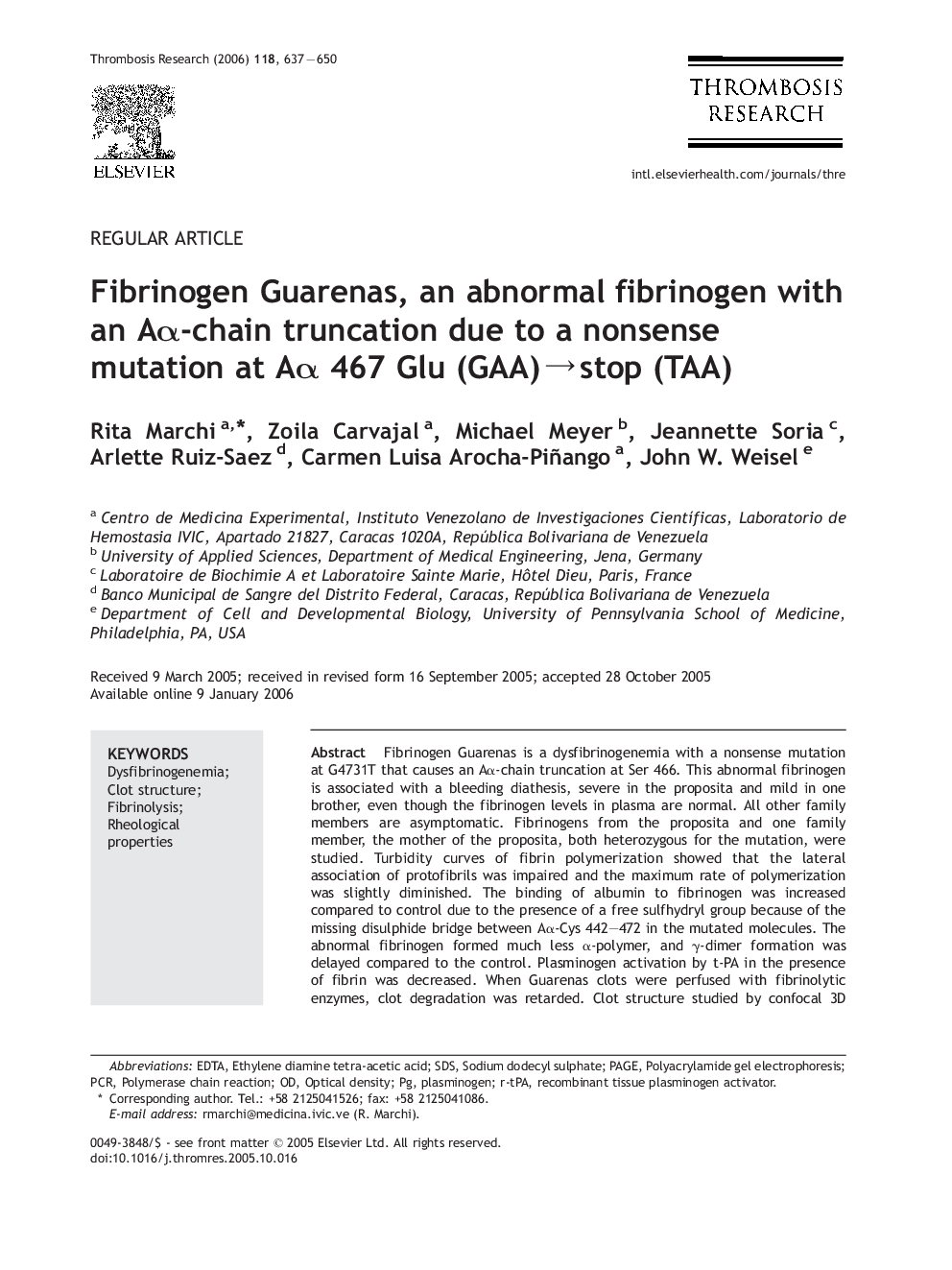| Article ID | Journal | Published Year | Pages | File Type |
|---|---|---|---|---|
| 3030155 | Thrombosis Research | 2006 | 14 Pages |
Fibrinogen Guarenas is a dysfibrinogenemia with a nonsense mutation at G4731T that causes an Aα-chain truncation at Ser 466. This abnormal fibrinogen is associated with a bleeding diathesis, severe in the proposita and mild in one brother, even though the fibrinogen levels in plasma are normal. All other family members are asymptomatic. Fibrinogens from the proposita and one family member, the mother of the proposita, both heterozygous for the mutation, were studied. Turbidity curves of fibrin polymerization showed that the lateral association of protofibrils was impaired and the maximum rate of polymerization was slightly diminished. The binding of albumin to fibrinogen was increased compared to control due to the presence of a free sulfhydryl group because of the missing disulphide bridge between Aα-Cys 442–472 in the mutated molecules. The abnormal fibrinogen formed much less α-polymer, and γ-dimer formation was delayed compared to the control. Plasminogen activation by t-PA in the presence of fibrin was decreased. When Guarenas clots were perfused with fibrinolytic enzymes, clot degradation was retarded. Clot structure studied by confocal 3D microscopy showed that the fibrin network was dense, made up of thin and highly branched fibers, which accounted for the decreased flow rates by buffer permeation and increased rigidity of the fibrin clots, measured using a torsion pendulum. It seems that the increased clot rigidity, decreased porosity, hypofibrinolysis and t-PA induced fibrinolysis, by itself are not necessarily associated with thrombotic disorders in dysfibrinogenemia.
